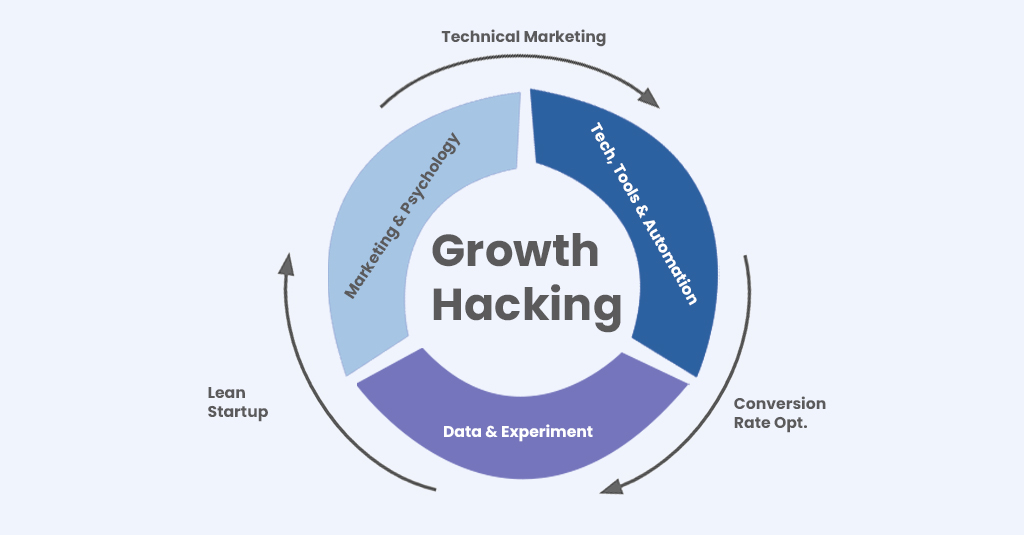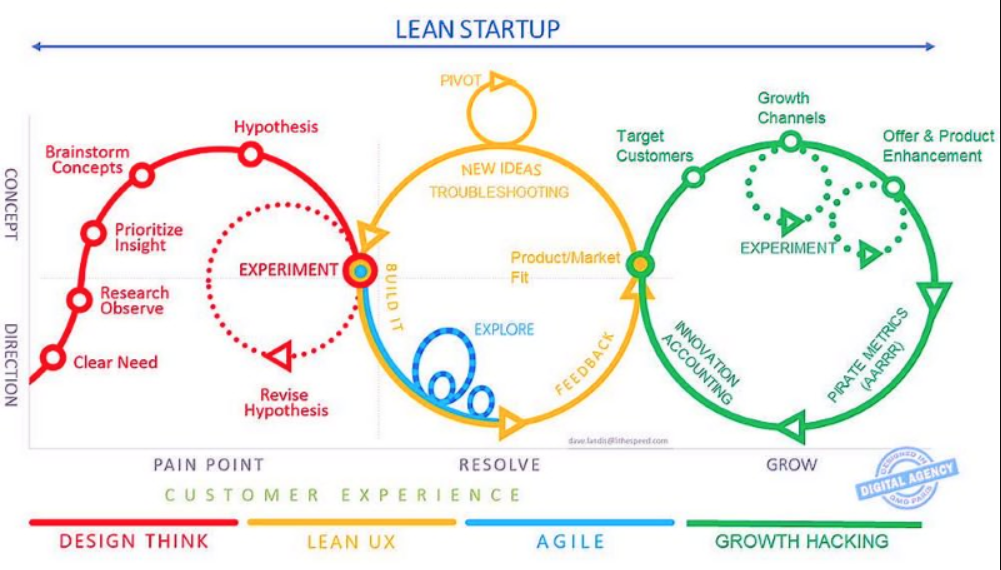Startup Growth Hacking: A Comprehensive Guide
In today’s competitive landscape, startups are constantly seeking innovative strategies to gain a foothold in their respective markets. One approach that has gained traction is growth hacking. But what exactly does this term mean, and how can it be leveraged to accelerate the growth of a startup? This guide delves into the intricacies of growth hacking, its significance for startups, and actionable techniques to implement right away.

What is Growth Hacking?
Definition and Origin
Growth hacking is a marketing strategy focused on rapid growth through innovative, low-cost alternatives to traditional marketing. The term was coined by Sean Ellis in 2010 when he described it as a process that uses creative and analytical approaches to identify and exploit growth opportunities in startups.
Key Principles of Growth Hacking
At its core, growth hacking revolves around three key principles:
- Creativity: Emphasizing unique and unorthodox ideas to reach target audiences.
- Analytics: Using data-driven insights to inform decisions and optimize processes.
- Experimentation: Rapid testing of ideas to discover what works best.
These principles allow startups to adapt quickly to changes and seize growth opportunities effectively.
Why Growth Hacking is Essential for Startups
Cost-Effective Marketing Strategies
For many startups, budgets are tight, and every dollar counts. Growth hacking provides cost-effective marketing solutions that maximize impact without the hefty price tag. By leveraging viral marketing techniques and social media platforms, startups can achieve significant outreach with minimal investment.
Rapid Experimentation and Innovation
In the fast-paced world of startups, being able to pivot quickly is crucial. Growth hacking encourages rapid experimentation, allowing businesses to test various marketing strategies simultaneously. This agility helps identify what resonates with customers, facilitating faster innovation cycles.
Data-Driven Decision Making
In the realm of growth hacking, data is king. By analyzing user behavior and feedback, startups can make informed decisions that guide their marketing strategies. This approach minimizes risk and allows for a targeted focus on customer acquisition and retention.
Key Growth Hacking Techniques
To effectively harness the power of growth hacking, startups can implement various techniques. Here are some of the most impactful strategies:
Viral Marketing
Viral marketing involves creating content that encourages users to share it with others, thereby increasing brand awareness exponentially. By designing campaigns that leverage existing social networks, startups can tap into organic growth channels.
A/B Testing and Optimization
Testing different versions of marketing materials or product features helps identify which variations yield better results. Startups can run A/B tests on landing pages, emails, or ads to optimize performance and boost conversion rates.
Content Marketing and SEO
Content is a crucial driver of organic traffic. Startups can create valuable, informative content that addresses customer pain points while optimizing it for search engines. This not only improves visibility but also establishes authority in the industry.
Leveraging Social Media
Social media platforms are powerful tools for growth hacking. By strategically engaging with followers, sharing relevant content, and using targeted ads, startups can increase their reach and foster community engagement.

Tools and Resources for Growth Hacking
Analytics Tools
Utilizing analytics tools like Google Analytics or Mixpanel enables startups to track user behavior, analyze traffic sources, and gather actionable insights. This data is invaluable for fine-tuning marketing strategies.
Automation Tools
Automation tools, such as HubSpot and Mailchimp, allow startups to streamline repetitive tasks, making it easier to focus on growth strategies while maintaining engagement with customers.
Social Media Management Tools
Tools like Hootsuite and Buffer help manage multiple social media accounts efficiently. These platforms enable startups to schedule posts, track engagement, and analyze performance across various channels.
Case Studies of Successful Growth Hacking
To further illustrate the power of growth hacking, let’s look at a few successful case studies:
Dropbox: The Referral Program
Dropbox implemented a referral program that rewarded users with additional storage space for inviting friends. This strategy resulted in a significant increase in user acquisition, with the company growing from 100,000 to 4 million users in just 15 months.
Airbnb: Leveraging Craigslist
Airbnb found a creative way to promote its listings by integrating with Craigslist. This allowed hosts to automatically post their listings on Craigslist, drastically increasing visibility and bookings.
Hotmail: The Email Signature Strategy
Hotmail is often cited as one of the earliest examples of effective growth hacking. By adding a simple tagline to the bottom of every outgoing email that read, “Get your free email at Hotmail,” the platform quickly attracted millions of users.
In summary, growth hacking is not just a marketing strategy; it’s a mindset that embraces creativity, experimentation, and data-driven decision-making. In the following sections, we will explore common mistakes startups make in their growth hacking efforts and future trends to watch in this dynamic field. Stay tuned for more insights on how to effectively scale your startup!
Common Mistakes to Avoid in Growth Hacking
While growth hacking offers numerous opportunities for startups, there are pitfalls that can hinder progress. Here are some common mistakes to watch out for:
1. Neglecting the Target Audience
Failing to understand your target audience can lead to wasted efforts and resources. Without a clear comprehension of your customers’ needs, preferences, and behaviors, growth strategies may miss the mark.
Tip: Conduct thorough market research and develop customer personas to ensure your strategies resonate with your audience.
2. Overlooking Data Analysis
Data is integral to effective growth hacking. Ignoring analytics can result in misguided strategies that don’t yield desired results.
Tip: Regularly analyze data from your marketing campaigns. Tools like Google Analytics and Mixpanel can help track user engagement and refine strategies.
3. Focusing Solely on Short-Term Gains
While rapid growth is enticing, neglecting long-term strategy can compromise sustainability. Many startups make the mistake of prioritizing quick wins over building a robust brand.
Tip: Balance short-term growth tactics with long-term brand-building efforts to ensure your startup remains viable in the future.
4. Ignoring Customer Feedback
Customer feedback is a goldmine for insights that can drive growth. Startups often overlook valuable feedback from users, which can lead to missed opportunities for improvement.
Tip: Create feedback loops through surveys and direct communication to gather insights that can inform product development and marketing strategies.
5. Inconsistent Branding
Inconsistent branding can confuse customers and weaken your brand identity. It’s vital to maintain a cohesive message and visual identity across all platforms.
Tip: Develop brand guidelines that outline how to represent your brand in various contexts, ensuring consistency in messaging and aesthetics.
Future Trends in Growth Hacking
As the startup landscape continues to evolve, growth hacking will adapt to new technologies and consumer behaviors. Here are some future trends to watch:
1. Increased Use of Artificial Intelligence
Artificial Intelligence (AI) is poised to revolutionize growth hacking strategies. Startups can leverage AI for predictive analytics, automating repetitive tasks, and personalizing user experiences.
Example: AI-driven tools can analyze user data to create tailored marketing campaigns, improving engagement and conversion rates.
2. Emphasis on Sustainability and Social Responsibility
Consumers are becoming more socially conscious, expecting brands to adopt sustainable practices. Startups that integrate social responsibility into their growth strategies will resonate with this audience.
Example: Brands that highlight sustainable sourcing or contribute to social causes can build stronger connections with consumers.
3. The Rise of Influencer Marketing
Influencer marketing continues to gain traction as a powerful growth hacking tool. Collaborating with influencers can amplify brand visibility and credibility.
Tip: Focus on micro-influencers who have a loyal following in your niche, as they often yield higher engagement rates than larger influencers.
4. Community Building
Building a community around your brand fosters loyalty and advocacy. Startups that engage their customers through forums, social media, and events can create a dedicated fan base.
Example: Brands like Patagonia cultivate strong communities by promoting environmental activism and encouraging customer involvement in sustainability efforts.
5. Enhanced Customer Experience
Providing exceptional customer experiences will become paramount. Startups that prioritize user experience in their product design and marketing strategies will differentiate themselves from competitors.
Tip: Regularly solicit customer feedback and be willing to iterate on your product or service based on user needs.
Frequently Asked Questions (FAQs)
What is growth hacking?
Growth hacking is a marketing strategy focused on achieving rapid growth through innovative and cost-effective techniques. It emphasizes creativity, experimentation, and data-driven decision-making.
How can startups implement growth hacking?
Startups can implement growth hacking by leveraging viral marketing, A/B testing, content marketing, social media strategies, and analytics tools to identify growth opportunities.
What tools can assist in growth hacking?
Several tools can help with growth hacking, including Google Analytics for tracking data, HubSpot for automation, and Hootsuite for managing social media.
Is growth hacking only for startups?
While growth hacking is particularly beneficial for startups due to limited resources, established companies can also adopt growth hacking techniques to rejuvenate their marketing strategies and drive innovation.
How do I measure the success of growth hacking efforts?
Measuring success involves tracking key performance indicators (KPIs) such as user acquisition rates, conversion rates, and engagement metrics. Tools like Mixpanel and Klipfolio can help visualize and analyze these metrics.
In conclusion, growth hacking is a transformative approach that empowers startups to achieve rapid growth through innovative strategies. By avoiding common pitfalls and embracing future trends, startups can position themselves for long-term success in an ever-changing market landscape. As you embark on your growth hacking journey, remember to stay agile, data-driven, and customer-focused.
For more insights on growth hacking, check out resources like GrowthHackers.com and explore case studies of successful startups leveraging these techniques.



